Affiliate disclosure: This post may contain affiliate links. Please see our Privacy Policy.
When the winter lemon crop comes in, it can be hard to find a way to put up all those lemons before they spoil. Fortunately, preserving lemons is easy, and there are literally dozens of creative ways to preserve lemons for use all year long.
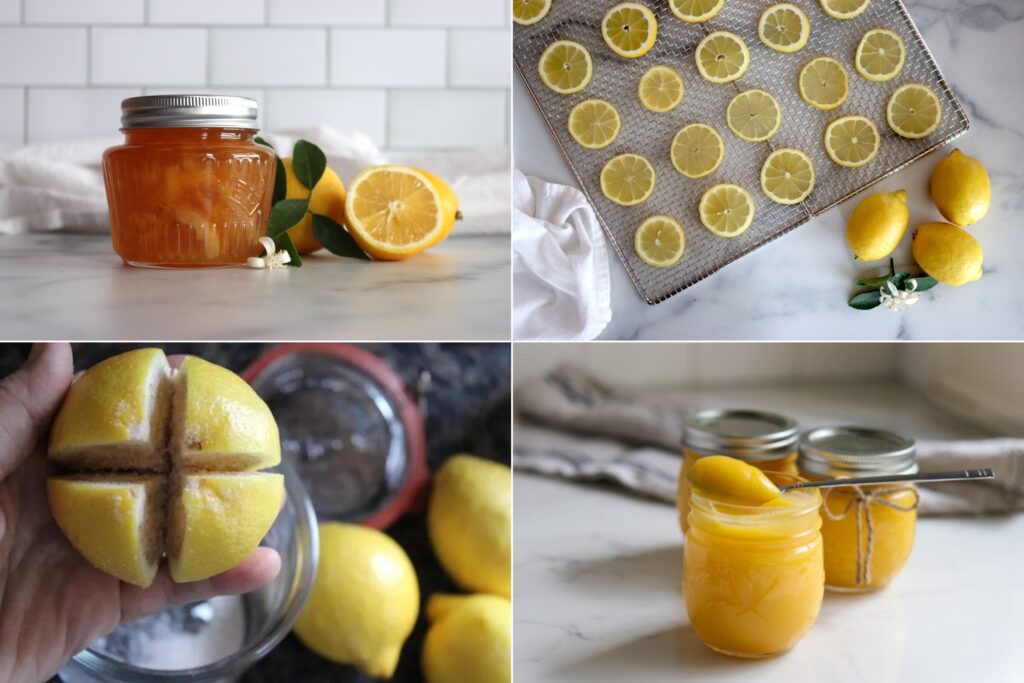
Table of Contents
- Salt Preserved Lemons
- Lemon Salt
- Freezing lemons
- Dehydrated Lemon Slices (& Dried Lemon Zest)
- Candied Lemon Slices (or Lemon Peel)
- Freeze Dried Lemons
- Limoncello
- Lemon Extract
- Lemon Vinegar
- Lemon Infused Honey
- Lacto-fermented Lemonade
- Lemon Wine (or Mead)
- Home Canned Lemon Juice
- Canned Lemonade Concentrate (or Lemon Syrup)
- Candied Lemon Sections Canned in Syrup
- Lemon Jam (or Jelly)
- Lemon Marmalade
- Marmellata di Limoni (Italian Lemon Marmalade)
- Lemon Curd
- Lemon Chutney
- Indian Pickled Lemons (Nimbu Ka Achaar)
- Lemon Pickled Cucumbers
- Other Lemon Canning Recipes
Growing up in California, we were always spoiled by huge crops of citrus. The lemon tree in our back yard put out buckets of fruit, and more often than not many just fell to the ground to rot. Now I find myself 3,000 miles away in Vermont, and what I wouldn’t give for a fresh backyard harvested lemon.
My sister still lives in California, and her backyard lemon tree is putting out a bumper crop. She’s struggling to find ways to preserve lemons while the glut continues. This post is for her, and for the rest of you rolling in backyard lemons.
For the rest of us in colder climates, there’s still plenty of lemons to go around. Most of the year, they’re absurdly expensive here, but for a brief period in January, the stores almost give them away. I picked up a case to experiment with, and the results thus far are delicious.
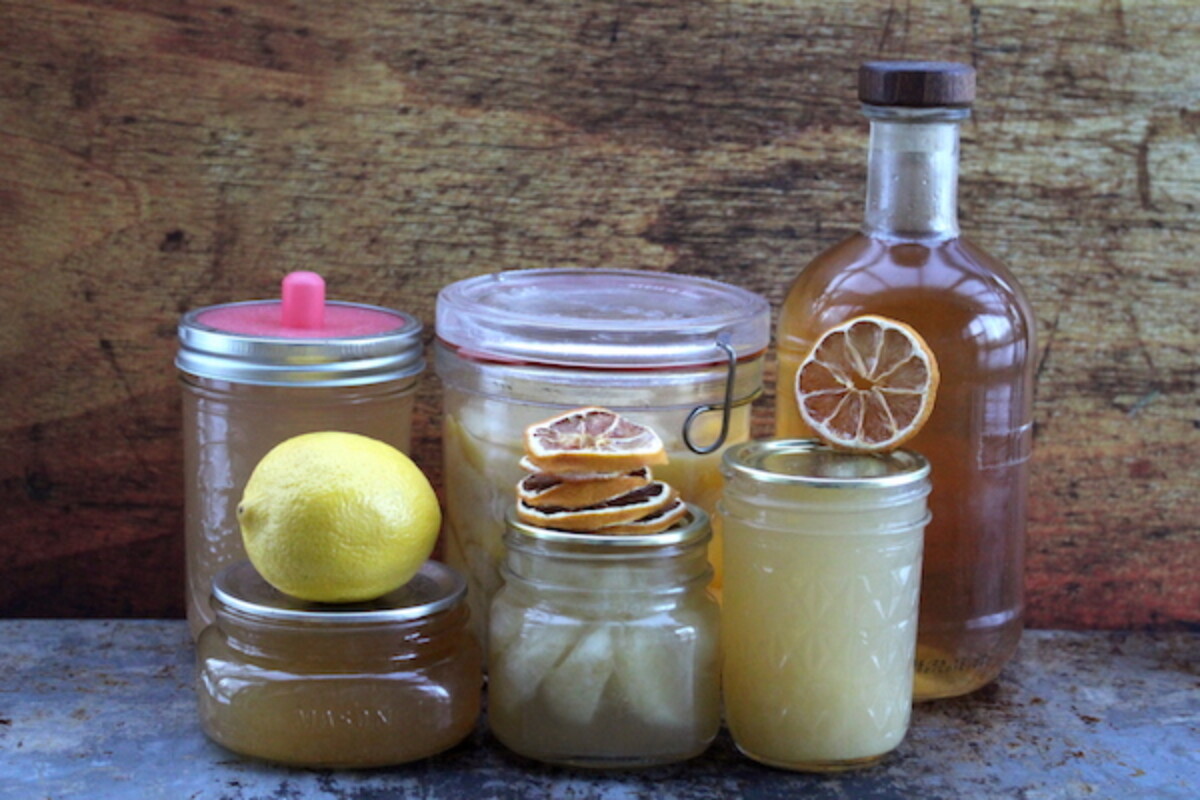
Salt Preserved Lemons
When you say “preserving lemons,” many people around the globe think immediately of salt-preserved lemons. Though they’re not that popular in American cuisine, as more international cooking makes its way into our culture, they’re finding their way into a surprising number of dishes.
Salt-preserved lemons are just lemons packed in salt and aged for a period of weeks or months. Preserved lemons are a natural lacto-ferment, just like sauerkraut. Lactic acid bacteria change the texture and flavor of the lemons, leaving you with something that’s completely transformed in the process.
The book Canning for a New Generation has you slice 5 small lemons (about 1 1/4 lbs) into eighths before packing them into a quart jar with 1/2 cup kosher salt and 1/2 cup lemon juice.
After 3-4 days, enough juice should be drawn out of the lemons to completely submerge all the slices, but if not, add more lemon juice to cover. Set them aside in a cool spot for at least 3 weeks until the peels are soft. At this point, the preserved lemons are ready for use, but they should keep for 6+ months in a cool spot out of direct sunlight (or in the fridge).
Be sure to use organic lemons for this, since you’re including the peel. Also note that the lid to the jar should only be loosely attached, to allow any bubbles to escape as the mixture is a live probiotic food.
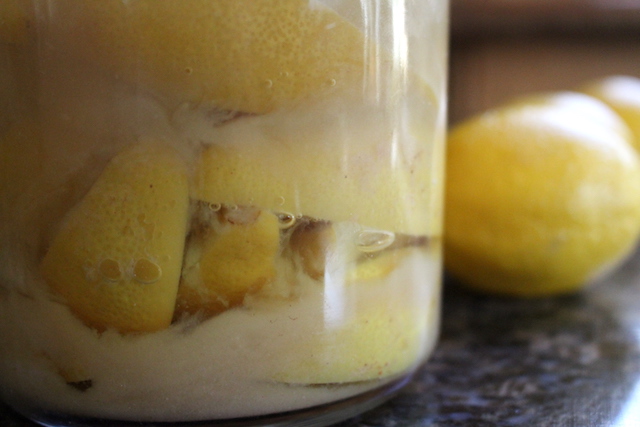
Lemon Salt
Quite a bit different than salt-preserved lemons, homemade lemon salt is a simple salt seasoning that preserves fresh lemon zest in salt. The salt takes on the flavor of the zest, and every pinch is lemon-y. This is often used as a finishing salt for all manner of cooking, and anything that would benefit from a mild salty lemon tang.
Since only the zest is used, this is a good method to use in combination with a big batch of frozen or canned lemon juice.
Freezing lemons
By far the simplest method to preserve lemons is to just pop them in the freezer. Lemons can be frozen whole, in slices, as juice or as zest. Frozen lemon juice is a no-brainer, and it defrosts quickly for easy use.
Lemon slices make a great addition to a quick weeknight meal, like lemon pepper chicken and they can just go straight from the freezer to the pan for flavor. What about whole lemons though?
My friend Angie freezes them whole, and she grates the whole frozen lemons right from the freezer for recipes, and she also uses them in home remedies (think winter time hot toddies). “In addition to using frozen lemons to make homemade remedies, you can grate a whole frozen lemon. Once the lemon is completely frozen, use a cheese grater to grate the whole thing. You’ll want to wear an oven mitt for this because it’s hard to hold a frozen lemon for long. Then put the frozen grated lemon in a bag or jar and put it back into the freezer. When you want to season a dish or your water put a spoonful of the frozen grated lemon in it.”
If you want to get really fancy, you can actually bake them into something like a tasty lemon pound cake and then freeze that for last-minute potlucks. For the most part though, freezing lemon juice in ice cube trays and zest separately is the most versatile way to freeze lemons. Here’s a detailed rundown on how to freeze lemons for best results.
Dehydrated Lemon Slices (& Dried Lemon Zest)
Dehydrating lemon slices is a really simple way to make lemons shelf-stable. The dried lemon slices can be added to hot teas later, or used in recipes like this sheet pan lemon pepper salmon. They also make lovely decorations around the holidays, and there’s no reason they can’t be hung up for decoration for a while before being slowly added to a cup of hot tea as needed.
Lemons can be dehydrated in a food dehydrator at 115 degrees for about 24 hours, or a bit faster at 135 degrees for about 6-8 hours.
Lemons can also be dehydrated in the oven, by placing them on a wire rack roasting rack on top of a cookie sheet. It takes about 2-3 hours to dehydrate them at 170 degrees. Dehydration time will depend on how juicy your lemons are, and how thin you’re able to slice them.
Similarly, you can zest lemons and dry the lemon zest for use in recipes later.
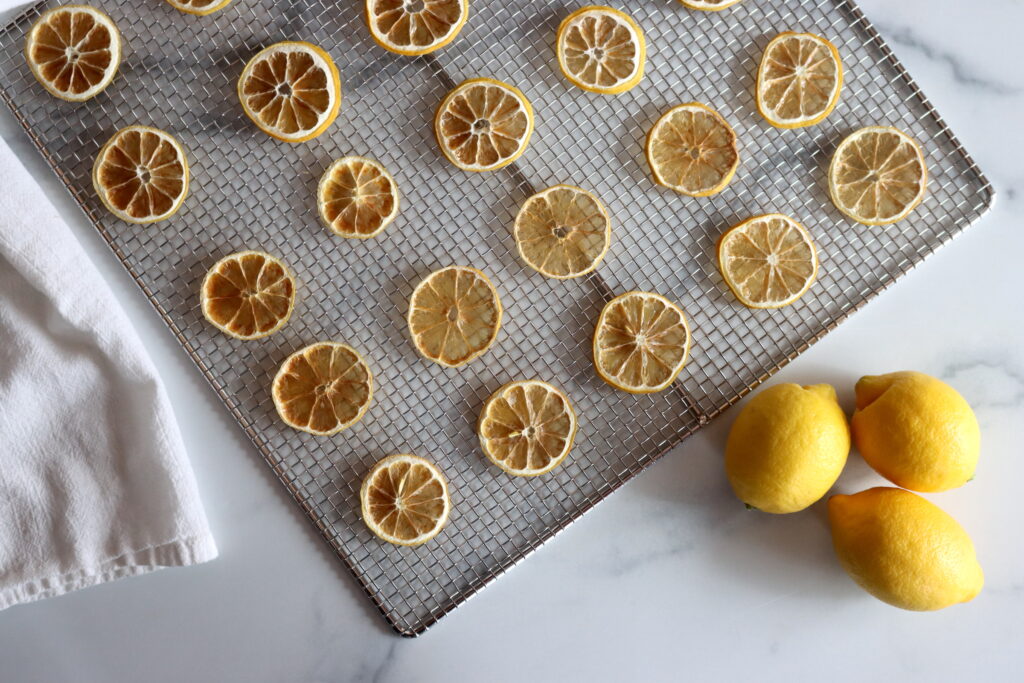
Candied Lemon Slices (or Lemon Peel)
Candied lemon slices are similar to dried lemons, but dipping the slices in sugar first helps them stay chewy and makes them a tasty snack all on their own. Candied lemon peel is a traditional ingredient in all manner of holiday baked goods, and it’s easy to make at home with fresh lemon peel and sugar.
Freeze Dried Lemons
At-home freeze dryers are expensive, but many die-hard food preservation nerds have one at home. Home freeze drying works by first freezing the food, then a vacuum pump pulls out the moisture, leaving the food with the same shape, color, and flavor of the original.
In the end, it’s all shelf-stable for 25+ years, which is pretty magical.
All you need to do is slice the lemons and put them through a freeze-drying cycle and they’ll be preserved for decades without refrigeration. Some companies sell freeze-dried lemon slices for adding to teas or to eat as a crunchy tart snack.
Limoncello
An Italian liqueur, homemade limoncello uses finely grated lemon zest infused in a neutral spirit like vodka. After several weeks of infusing, the zest is filtered out and simple syrup is added to create a sweet lemon drop flavored liqueur.
In the US, the name is often Americanized a bit and spelled “Lemoncello” instead of limoncello.
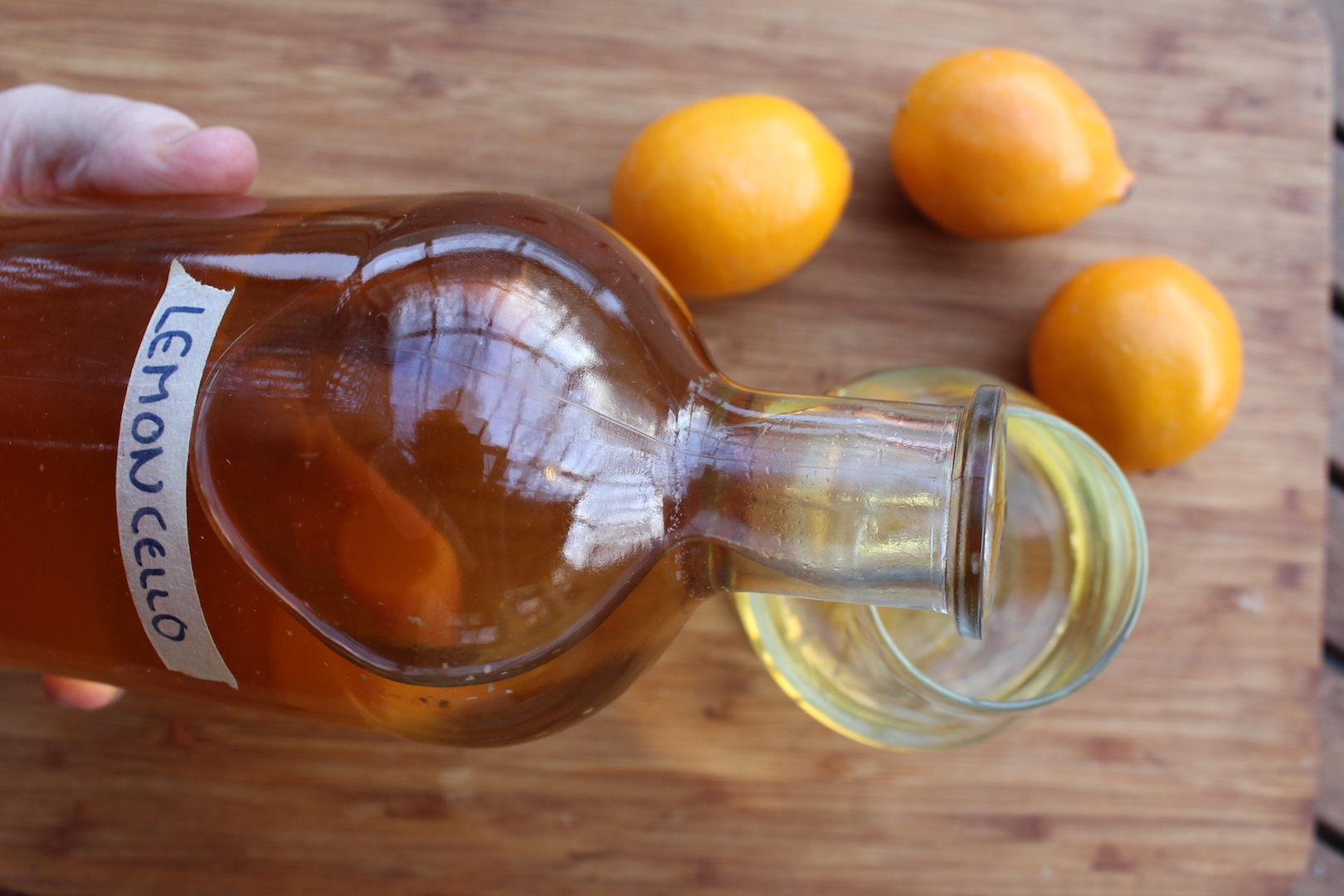
Lemon Extract
Homemade lemon extract is no more difficult than limoncello, but you skip adding simple syrup at the end. The resulting extract can be used just like you’d use vanilla extract, but for a lemon flavor instead.
Lemon Vinegar
I recently saw a meme going around the internet that said, “In the 20th century we have fake lemons in our lemonade but real lemons in our cleaners.” Kinda sad, but true in many cases. There are a lot of lemon cleaners on the market, and many advertise that they’re made with real lemons.
Making your own lemon vinegar cleaner is pretty simple, just add the lemon peels from juiced lemons into a jar of white vinegar and there you have it. Super easy lemon cleaner.
If you’re using organic lemons, this “cleaner” actually makes a pretty good addition to a vinaigrette…
Lemon Infused Honey
Lemon Infused Honey uses honey to preserve lemon slices, and at the same time, the lemons add flavor into every drop of honey.
Take a spoonful out to add to your favorite teas, and it’s absolutely divine in a wintertime hot toddy.
Lacto-fermented Lemonade
Probiotic Lemonade is a simple lacto-ferment that incorporates the same beneficial bacteria found in yogurt right into a fizzy glass of lemonade. Simply make a bit of lemonade, and then add a little yogurt whey to the container. Allow it to culture at room temperature for about 2 days for a fizzy probiotic beverage.
Once the two days are up, store the lemonade in the fridge to slow down the fermentation process. It’ll still be a live food, but the fridge keeps the little beasties from going crazy and making the lemonade too tart or acidic.
Since this is a quick ferment, a silicone water lock is optional, but it’ll help keep the ferment covered. It’s also good for extra safety, to make sure no other less fun bacteria make their way into the culture.
If you’re looking for more probiotic ways to eat lemons, the book Fermented Vegetables has a tasty-looking lemon dill sauerkraut recipe…
Lemon Wine (or Mead)
Homemade lemon wine is pretty easy to make at home. It’s made with whole lemons, so you get the intense lemon flavor from the zest as well.
If you’re not familiar with winemaking, I’d suggest reading my beginner’s guide to making wine at home.
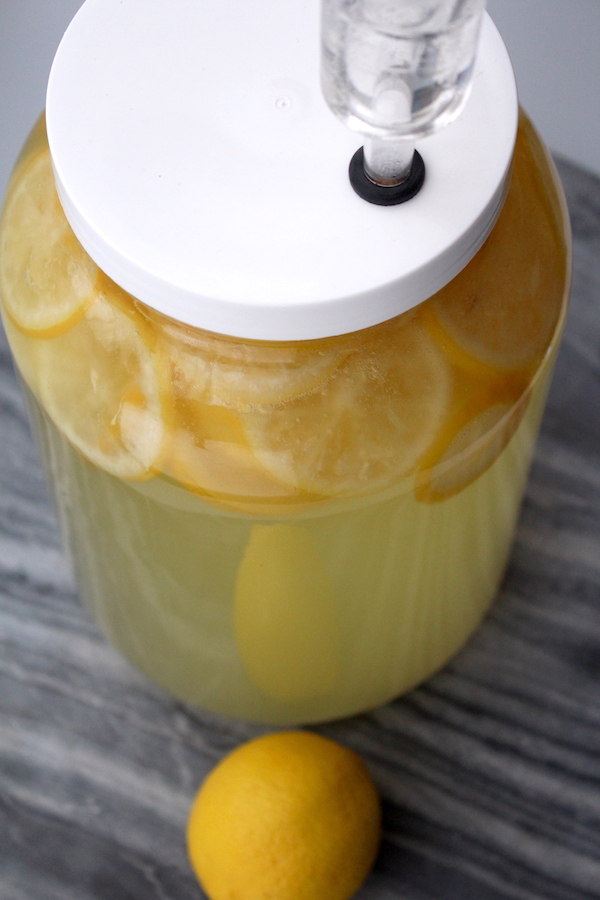
Home Canned Lemon Juice
Lemon juice freezes easily, but still, I prefer to can it. Home-canned lemon juice is incredibly versatile and shelf-stable.
Simply juice as many lemons as you please and then filter the juice through a fine-mesh strainer. Bring the juice up to a boil and then water bath can it for 5 minutes leaving 1/4 inch headspace.
With the small lemons I had on hand, it took the juice of 5 lemons to fill one half-pint canning jar. The monster lemons from the backyard tree of my youth would fill a jar much quicker…
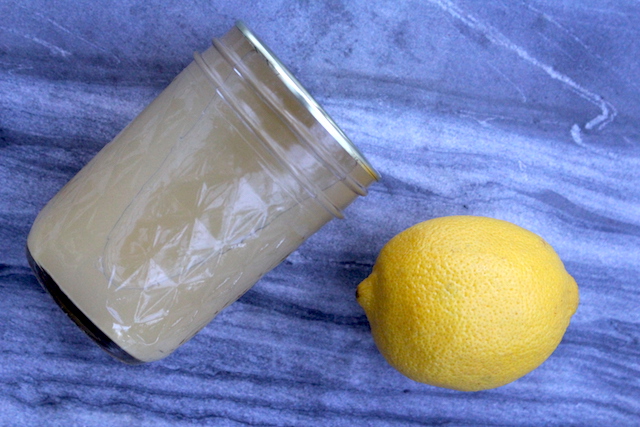
Canned Lemonade Concentrate (or Lemon Syrup)
Beyond just canning straight lemon juice, you can make your own premade jars of lemonade and can them up well in advance of summer. If you make canned jars of lemonade concentrate ahead of time, you can quickly pop one in the fridge in the morning (along with a can of seltzer) before heading out for a day of work in the garden. By lunchtime, you have a cold drink ready in about 2 seconds.
The Ball Book of Canning and Preserving has a recipe for strawberry lemonade concentrate using 6 cups strawberries, 4 cups lemon juice, and 6 cups sugar. The strawberries are filtered out after a brief boil, and then the concentrate is canned in a water bath canner for 15 minutes (with 1/4 inch headspace). The strawberries are totally optional, and most recipes just have you make a lemon simple syrup with 1 cup lemon juice to 1 cup sugar.
Personally, I like a tart lemon juice with a lot of flavor, so I make it with 4 cups lemon juice to 1 cup sugar. The sugar is only in there to sweeten the lemonade concentrate and isn’t necessary for preservation. Decrease it as much as suits your taste.
Here’s where you can read more about making and canning lemonade (& Lemonade Concentrate).
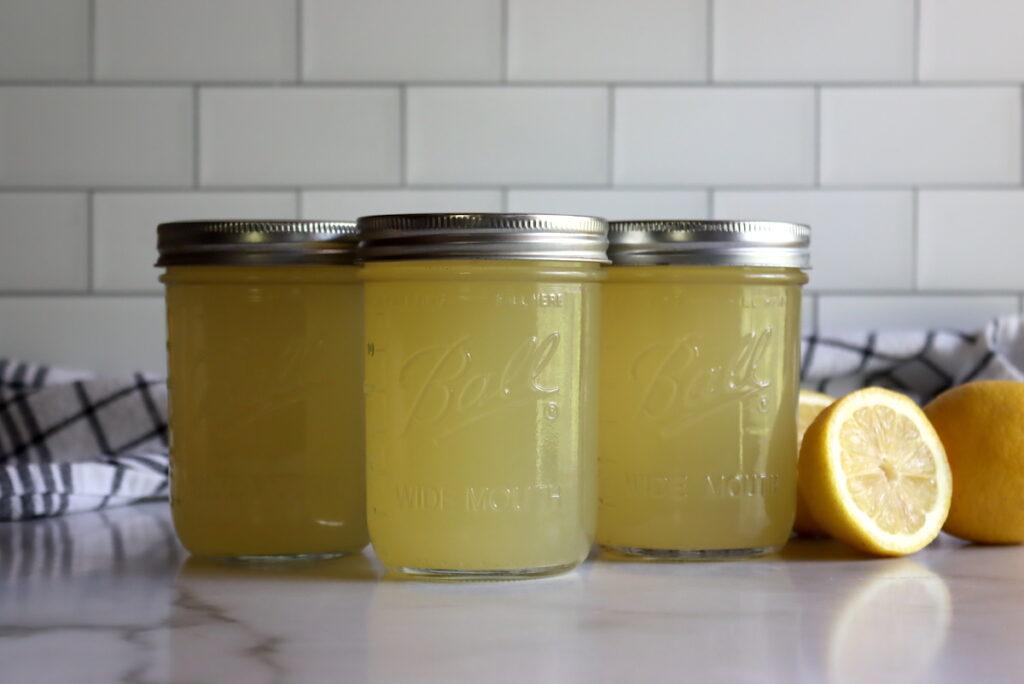
Candied Lemon Sections Canned in Syrup
My thought here was to make canned lemons, much like those cute little mandarin orange sections you can buy in the store. I’ve made my own canned oranges with great success, so why not lemons?
Oranges can be put up in very light syrup, but canned lemons need quite a bit of sugar, so I went with extra heavy syrup. That’s a 1:1 ratio of water and sugar simmered just until the sugar dissolves.
Simmer the lemon sections in a bit of hot syrup, and then hot pack them into canning jars leaving 1/2 inch headspace. Process in a water bath canner for 10 minutes for shelf-stable canned lemons, or store in the fridge for more immediate use.
With careful peeling and extra attention to removing the pith, I was able to can up individual lemon sections without bitterness. The results were wonderful, each one tastes like a lovely fruity lemon drop candy but with all the juice of a real lemon.
I have plenty of ideas on how to use them too. The center fruit layer in a cake? Maybe a lemon drop cocktail?
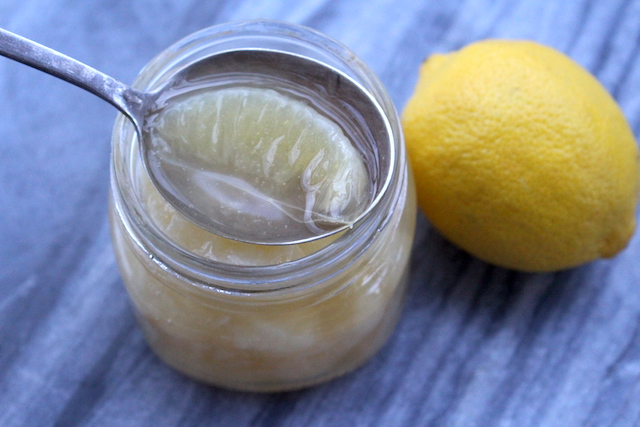
Lemon Jam (or Jelly)
My homemade orange jam was a huge hit with the kids, so I decided to use the same method to make a lemon jam. Since I didn’t have organic lemons, I didn’t want to make a marmalade with the zest or peel. Kids are sometimes squeamish about peels in jam, especially toddlers who might well reject it if you use the wrong spoon to serve it.
Lemon Jelly is simple, and just requires cooking lemon slices or lemon juice with sugar, and then thickening it with pectin. I tend to prefer the chunky texture of jams rather than jellies, so I tried using unfiltered lemon juice with all the pulp intact. I also wanted to try to make pectin-freeze lemon jam, since citrus tends to have quite a bit of natural pectin.
I used 1 cup of sugar to 1 cup of lemon pulp/juice and simmered it until the mixture reached gel stage (220 degrees F). The jam was a bit thinner than I’d like and quite sweet.
In the future, I’ll try less sugar and cook the mixture longer to get a thicker set. Lemon jam (or jelly) can be canned just like most jams, with 1/4 inch of headspace and 5 minutes in a water bath canner for half-pint jars.
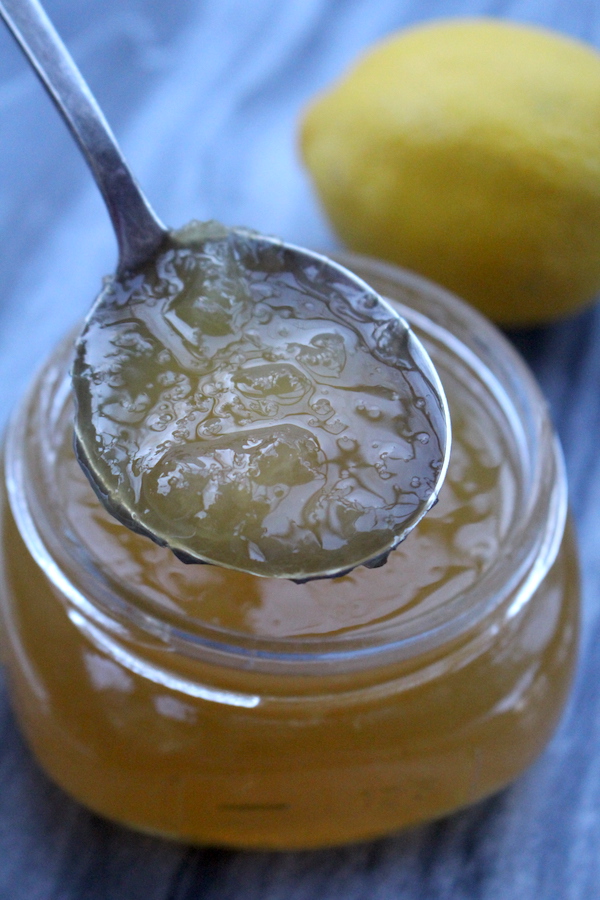
Lemon Marmalade
Fundamentally different than lemon jam or jelly, lemon marmalade incorporates either lemon zest or whole pieces of lemon peel into the preserve. The extra flavor from the zest, along with a hint of bitterness from the peel, gives marmalade a lot more character than lemon jam. It also has more texture since there are more solids incorporated into a marmalade.
This recipe for a traditional lemon marmalade includes just two ingredients: lemons and sugar.
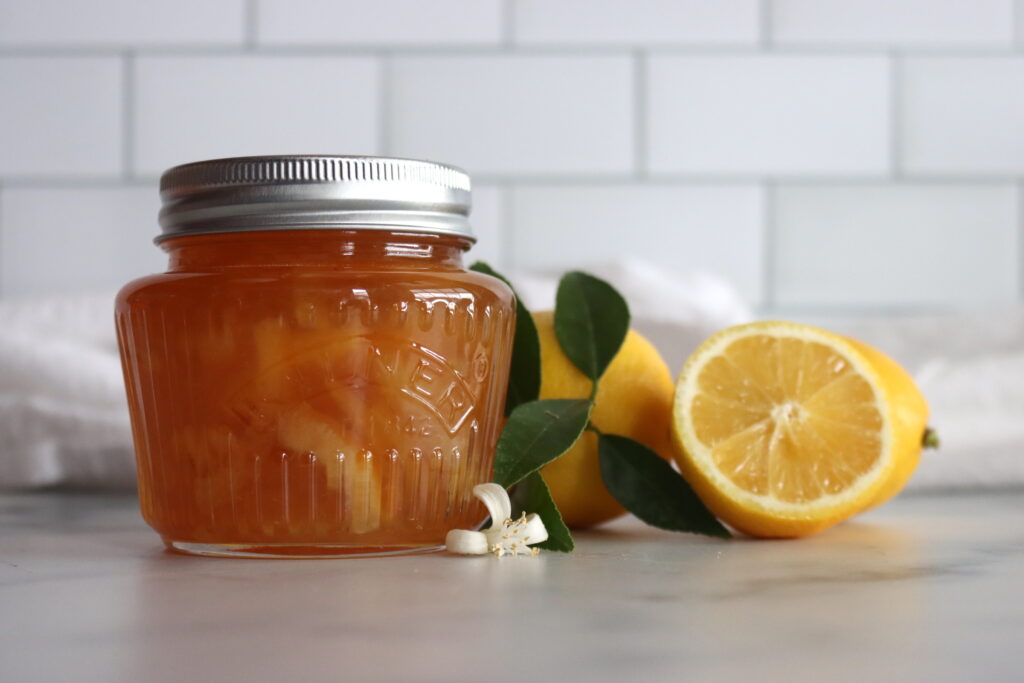
Marmellata di Limoni (Italian Lemon Marmalade)
According to Food52, “While the English-style of marmalade results in a clear, often soft jam punctuated with finely sliced citrus peel, this is a Sicilian style recipe for lemon marmalade where the cooked, whole lemons are put through a passaverdura, a food mill, for an opaque purée that is then combined with the sugar and thickened over the stove.”
The ingredients for their recipe are simple, but this version is time-consuming. Two pounds of lemons are sliced and then simmered for 2 hours until every part, including the peel, is completely soft.
The whole cooked lemons are then run through a food mill, before being combined with 5 cups of the cooking liquid and a full 10 cups of sugar. Needless to say, this is a very sweet marmalade.
Lemon Curd
Lemon curd is actually a much better way to preserve eggs than it is lemons. A single batch uses 7 egg yolks and 4 whole eggs, along with one cup of lemon juice and a full 1/2 cup of finely grated lemon zest. Canning lemon curd will make it shelf-stable, but it preserves quality better in the freezer.
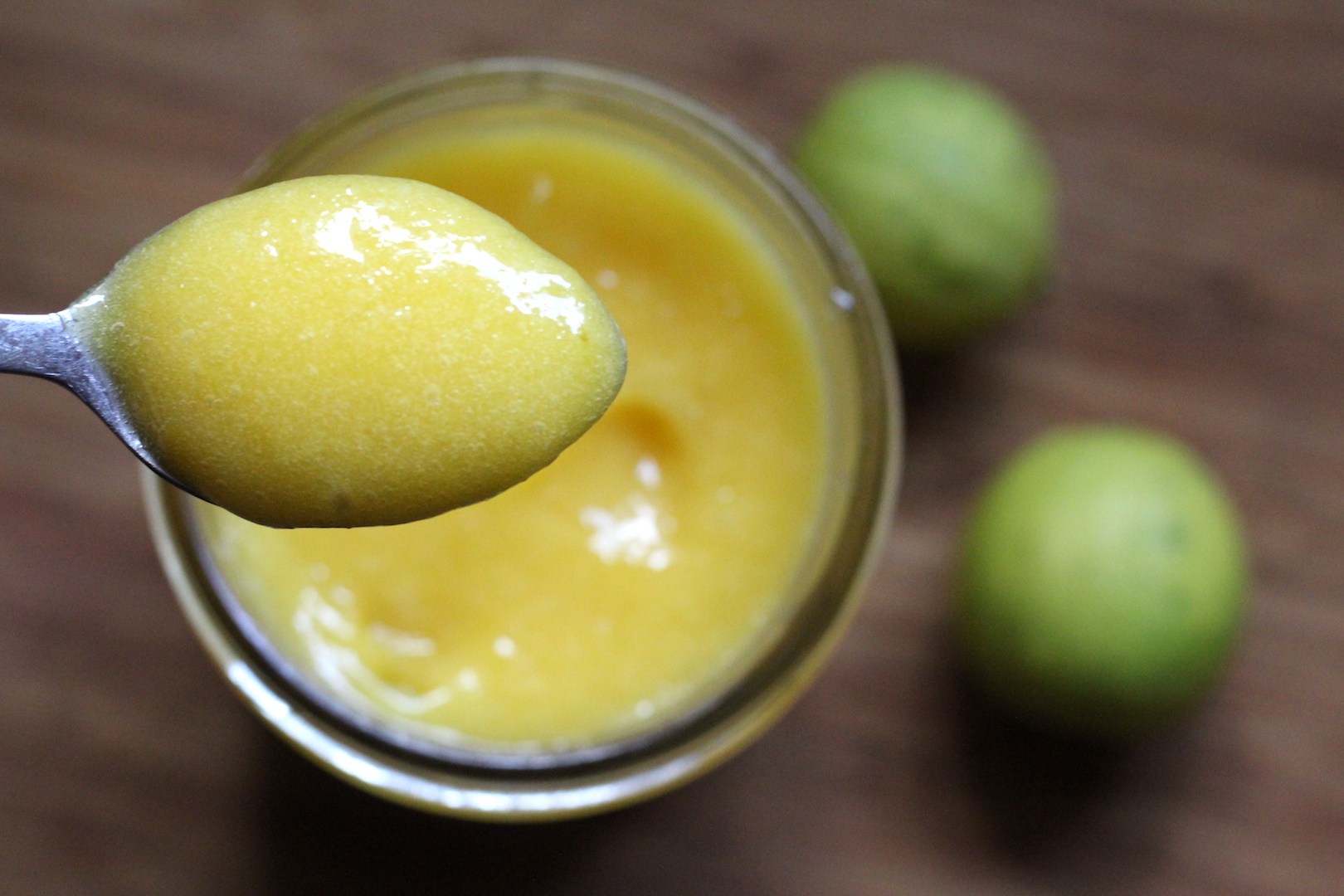
Lemon Chutney
A chutney is a sweet and sour condiment used with Indian food, and lemons are the perfect base. This recipe from Food52 mixes lemon juice with raisins, sugar, garlic, salt, and warm spices to create a condiment to spice up simple homemade curries.
Indian Pickled Lemons (Nimbu Ka Achaar)
Sometimes called “lemon pickles,” these quick spicy Indian pickled lemons are used as a multi-purpose condiment. Recipes like this one from Saveur often include whole diced lemons (peel and all) packed into a jar with vinegar, salt, sugar, and spices such as ginger, turmeric, cumin, and hot chillis.
Lemon Pickled Cucumbers
So while Indian pickled lemons are just spicy lemons pickled in brine, lemon pickles are totally different. They’re like traditional cucumber pickles, but instead of using vinegar, the cucumbers are pickled in lemon juice.
According to the Ball Book of Home Canning, “If you find traditional pickles too astringent, try this refreshing alternative. Lemon juice provides a unique flavor, and a touch of sugar takes the bite out of the vinegar. For best flavor, let these pickles mature 4 to 6 weeks before using.”
The Ball Books recipe includes quite a bit of lemon juice and a whole sliced lemon, along with allspice, black pepper, salt, and pickling cucumbers.
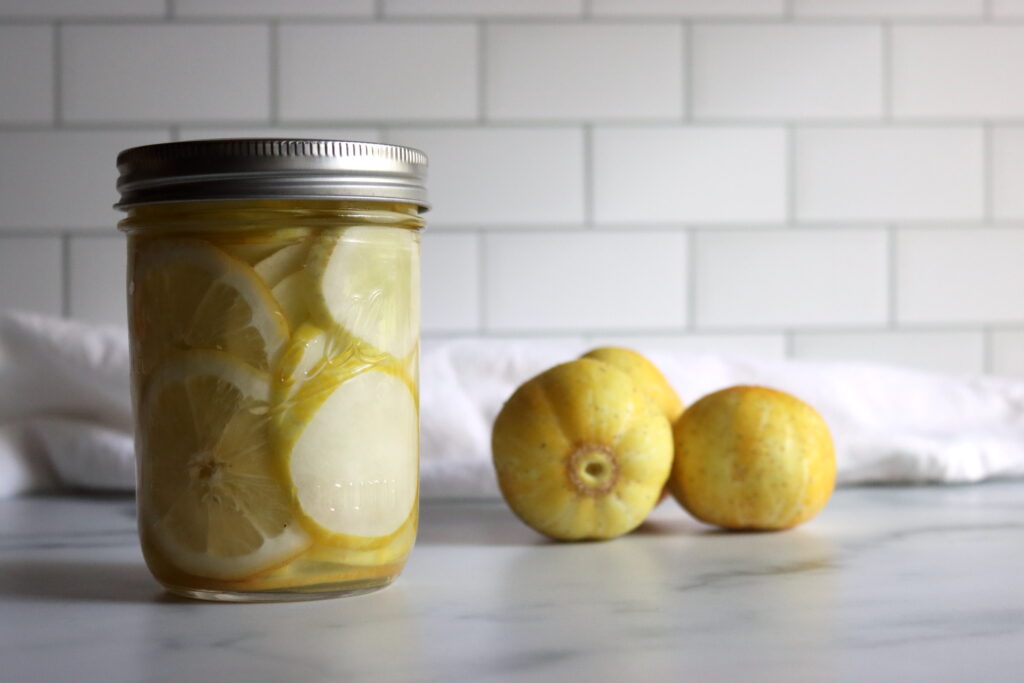
Other Lemon Canning Recipes
Beyond basic jams, jellies, pickles, and chutneys, there are literally hundreds of ways to can up a lemon. For more ideas, try any of these really wonderfully home canning books:
- The Ball Complete Book of Home Preserving has 20 lemon canning recipes, including Lemon Prune Honey Butter, Prickly Pear Marmalade, and Lemon-Sage Wine Mustard.
- Canning for a New Generation has 10 lemon-based canning recipes, including Blueberry and Meyer Lemon Marmalade and a Meyer lemon and rose petal marmalade.
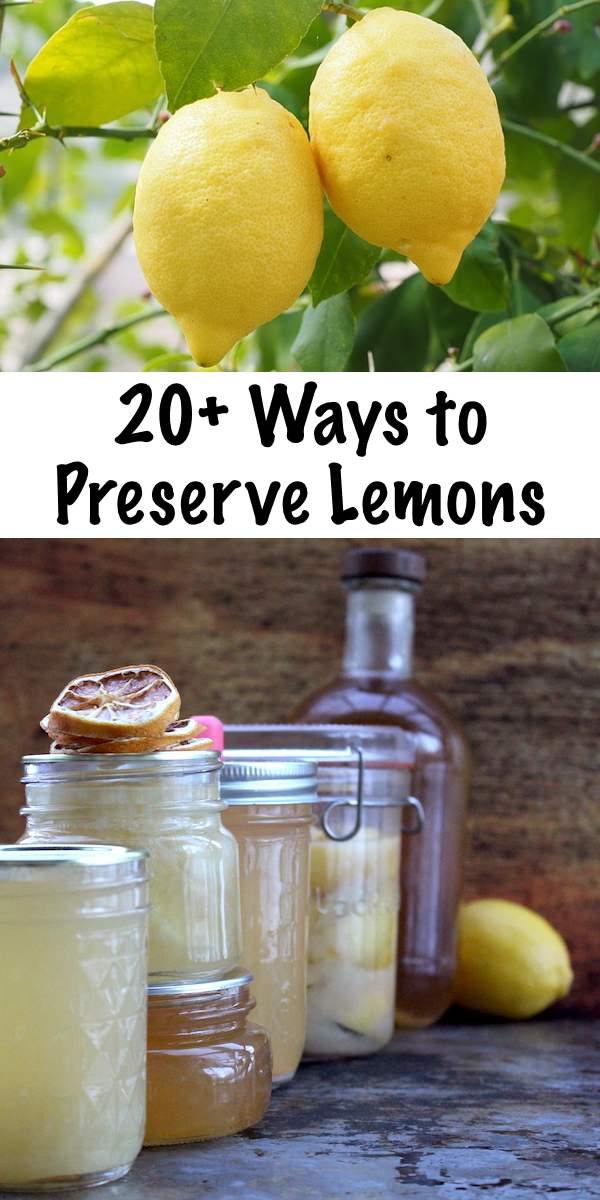

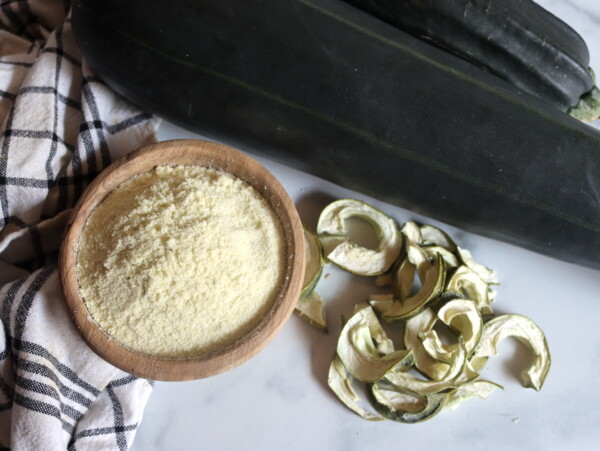

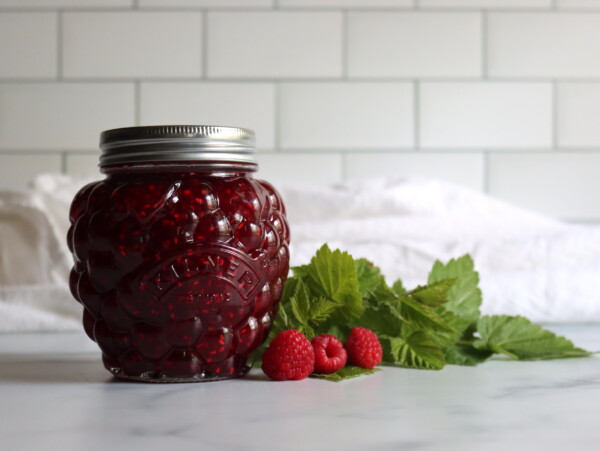










This might be a “no-no” I’m running my freeze drier and have a bag of lemons…can I juice then and freeze then put in FD to make a powder? Spoon into whatever I want that lemon flavor?
I don’t see why not.
Great ideas!
I just peel the citrus, fill half gal or qt jars with whole fruit, – add filtered water & put in fridge. Take one out when you want. Lasts at least 12 months in the fridge. Flomation Famous has a you tube video showing their success.
Hi. I’m from Califirnia aswell and do miss how easy it was to grow lemons. I grow Meyer and Variegated Lemons now here in Zone 8a North Carolina. It’s a struggle with cold weather. But I wanted to tell everyone that I get maybe 100 lemons a year right now and I use one just about everyday so I don’t need to preserve many. But I read about putting them in a plastic ziploc with like 1/4 to 1/2 cup water and OMG! They have lasted at least 4 months that way. I just put about 3o in the crisper this way 2 weeks ago and they look fantastic !
That’s great! Thanks so much for sharing.
My root cellar is around 50 degrees. It rarely goes above 55. Do you think they will keep thee? My fridge is too small. Thanks!
Which preservation method were you planning to use or were you just wanting to store them as is in your cellar?
You have totally made my day! We just harvested about 60 lbs. of lemons and 30 lbs. of oranges. We have about another 40 or so lbs. of lemons to harvest. We will be trying the majority of the processes mentioned here! YOU ARE MY LEMON HERO!!!
I’m so glad we could help.
you are a woman after my own heart ashley! i am in williston vt and we produce about 65% of our own food. i am originally from California and grew up with a meyer lemon tree in my back yard. i never knew why store bot lemon were so sour until i learned the tree we had was a Meyer Leomon. 🙂 My sister sends me a box of fresh organic meyer lemons every winter and i have loads of fun with them, i look forward to trying the lemon curd! yum!
When I was young my nana used to grease lemons to keep them but I don’t know what she used, I think it would have been dripping but I don’t really know.
That’s very interesting. I haven’t heard of that before.
DO YOU USE SOME GAGE FOR ACIDITY. I AGREE THAT FRESH LEMONS TASTE WAY BETTER. BUT I HAVE READ THAT LEMONS, LIKE TOMATOES, VARY ENOUGH IN ACIDITY THAT NOT ALL LEMONS QUALIFY FOR BOILING WATER BATH CANNING FOR SAFETY REASONS. WHAT DO YOU KNOW? I’VE READ THAT YOU CAN GET PAPER LITMUS STRIPS TO CHECK THE ACIDITY OF TOMATOES.
I use fresh squeezed lemon juice for lemon curd- much nicer- and if there are some little bits of lemon in it, even nicer.
3 large eggs
3 large egg yolks
1 cup sugar
1 tablespoon lemon zest
1 cup freshly squeezed lemon juice
Rind of 2-4 lemons
3 tablespoons butter
Mix eggs and sugar, then add lemon juice and rind, bring to a simmer and cook gentlyin a smaller pot over anoth pot of water, stirring all the time, until it thickens. Add butter. Pour into clean, hot, clean jars (Cold jars might crack and are not sterile) and put the lids on. When cooling you should hear a popping sound. that is your jar sealing, and it can then be kept for a long time- if it lasts that long. Mine just gets eaten by all who smell it cooking.
The Ball canning book specifically says to use store-bought bottled lemon juice to make lemon curd for canning.
Heck yes! My deep freezer is about to get filled with lemons. I’ve been obsessed with fresh lemons this season and I can’t wait to try some of these recipes out. Thank you from a fellow Vermonter!
Nice! I’m so glad =) I’m working on starting a lemon wine today, so the recipe for that one will be up soon too.